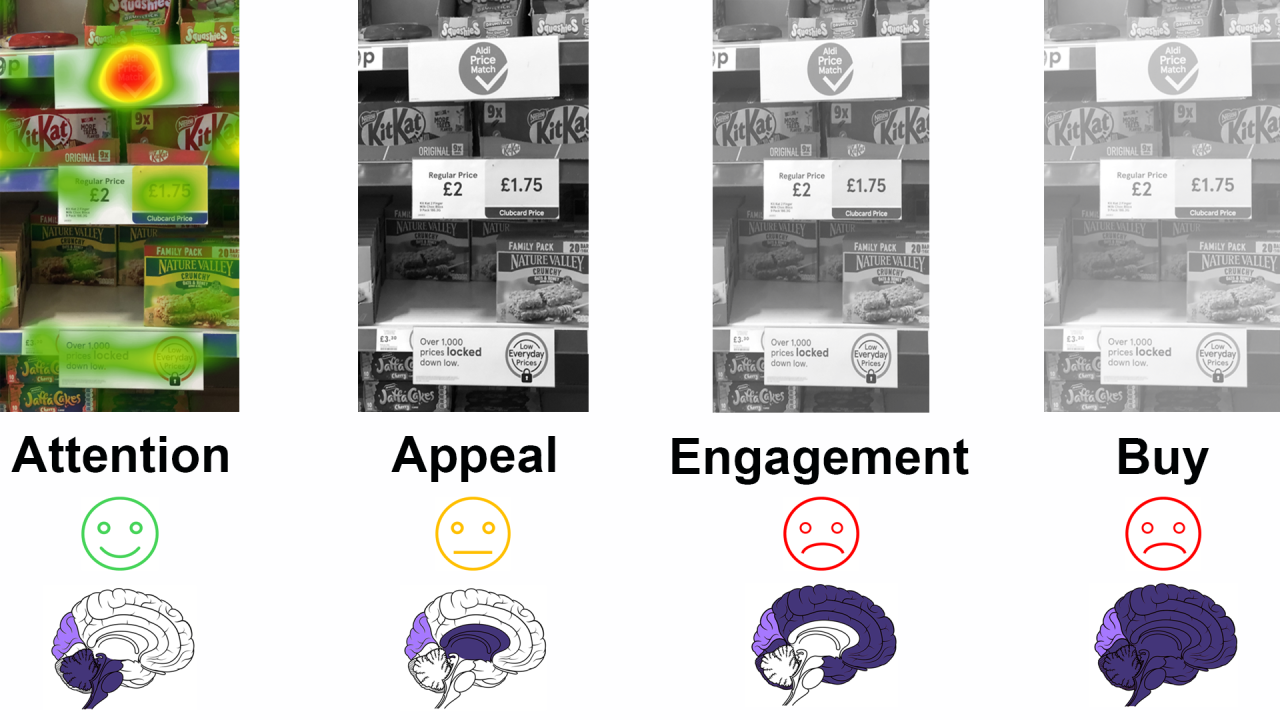In the ever-evolving landscape of marketing, particularly in shopper marketing, brands and retailers rely heavily on data-driven insights to optimise their campaigns. Predictive eye-tracking tools have been widely adopted for their ability to forecast where consumers will look within a given visual environment. While these tools offer valuable insights into attention patterns, they fall significantly short when it comes to predicting actual shopper and consumer behaviour beyond the initial "See" stage.
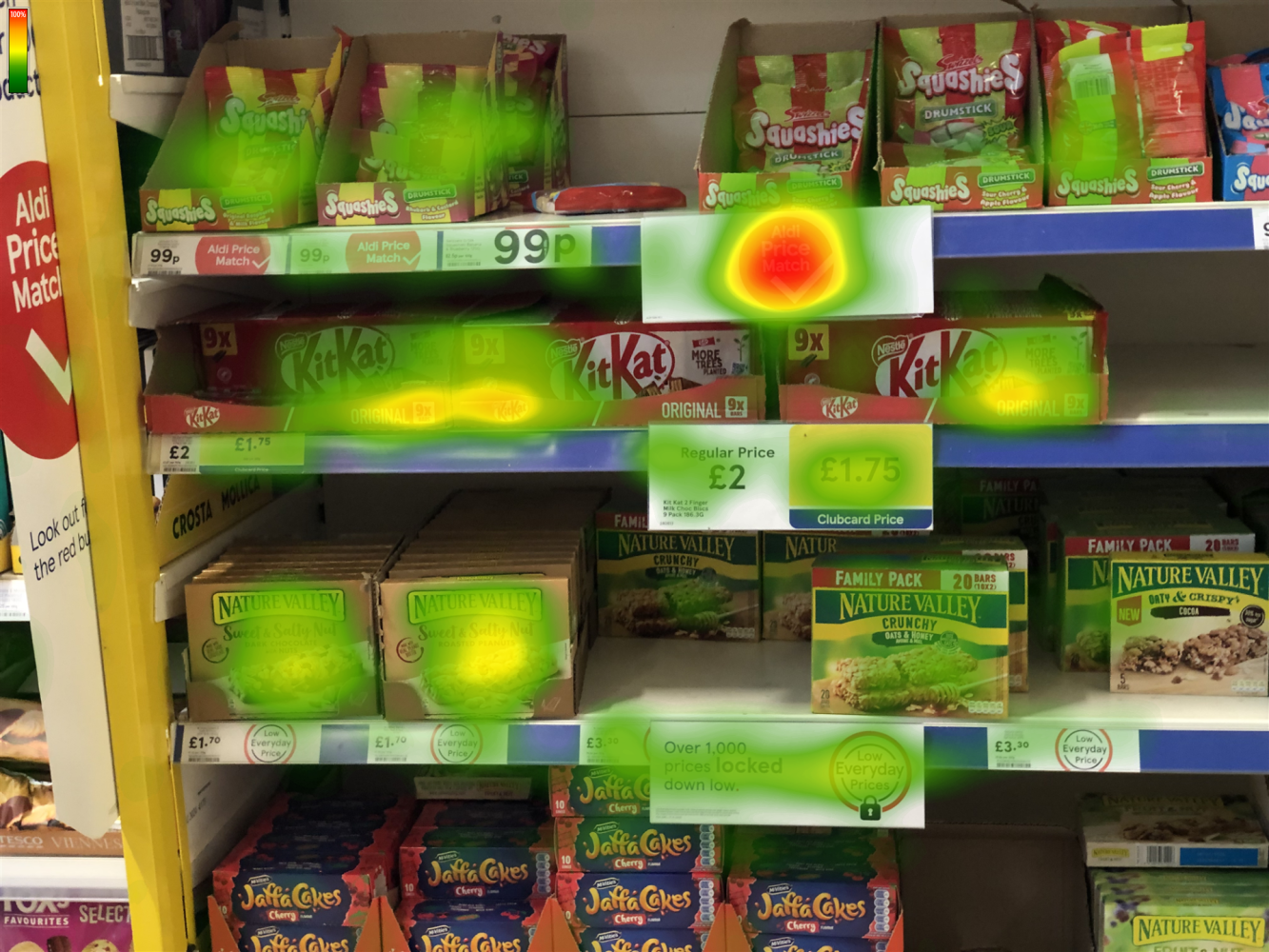
How do you respond to a heatmap? It just tells you the what, and specifically only in relation to getting attention. Moving to a Design Effectiveness Audit approach lets you also understand why some aspects of your design stand out, and perhaps why others don’t. In addition, you also get actionable design-related insights relating to generating more appeal, driving up engagement, and delivering more sales, all from creating a more psychologically effective design.
To drive meaningful business outcomes including brand appeal, engagement, and ultimately sales, you should go beyond mere attention prediction. A more holistic approach, such as that offered by Creative Tests’ Design Effectiveness Audits, provides a deeper psychological analysis of the entire purchase funnel: See, Appeal, Engage, and Buy. This comprehensive method is far more effective at ensuring that marketing communications not only capture attention but also lead to increased brand preference and conversion.

The Limitations of Predictive Eye Tracking
Predictive eye-tracking technology is based on algorithms trained on large datasets to estimate how visual attention will be distributed across a design. These tools have proven useful in evaluating whether an advertisement, shelf display, or packaging design will stand out. However, their predictive power stops at the point of initial attention.
Here’s why predictive eye tracking alone is insufficient for effective shopper marketing:
- Attention Does Not Equal Engagement Just because a consumer looks at a brand or an advertisement does not mean they will engage with it, let alone buy it. Predictive eye-tracking tools lack the capability to measure emotional response, and cognitive engagement, critical factors that drive purchasing decisions.
- No Insight Into Persuasion Predictive eye tracking only measures where people look, not why they look there or what they think after doing so. It fails to gauge subconscious emotional triggers and psychological motivators that influence consumer behaviour. How do you respond to a heatmap? It tells you what was looked at, but it doesn’t explain why those elements attracted attention or how they contribute to overall brand appeal.
- Lack of Appeal Measurement Eye-tracking can predict visibility but does not determine whether a product or ad is appealing. Without understanding appeal, marketers miss the opportunity to optimise branding elements that encourage positive sentiment and interest. A Design Effectiveness Audit bridges this gap by explaining why certain elements work while others fail to connect with shoppers.
- Inability to Predict Purchase Propensity Predictive eye-tracking models are unable to forecast whether a consumer will actually proceed to buy a product. Purchase decisions involve a mix of cognitive biases, emotional engagement, and social influences, all of which are beyond the scope of simple gaze tracking. A Design Effectiveness Audit goes further by delivering actionable insights into how to increase emotional and cognitive engagement at key decision points.
A More Effective Alternative: The Design Effectiveness Audit
To achieve real business success in shopper marketing, brands must adopt a more comprehensive approach that evaluates not just visibility, but the entire psychological journey from See to Buy. This is where the Design Effectiveness Audit by Creative Test Excels.
Unlike eye-tracking tools that provide a one-dimensional view of consumer attention, the Design Effectiveness Audit takes a deep dive into psychological factors that impact visibility and stand out. By analysing four critical stages of the purchase funnel, this methodology ensures that marketing interventions are designed for maximum effectiveness.
1. See – Ensuring Visibility
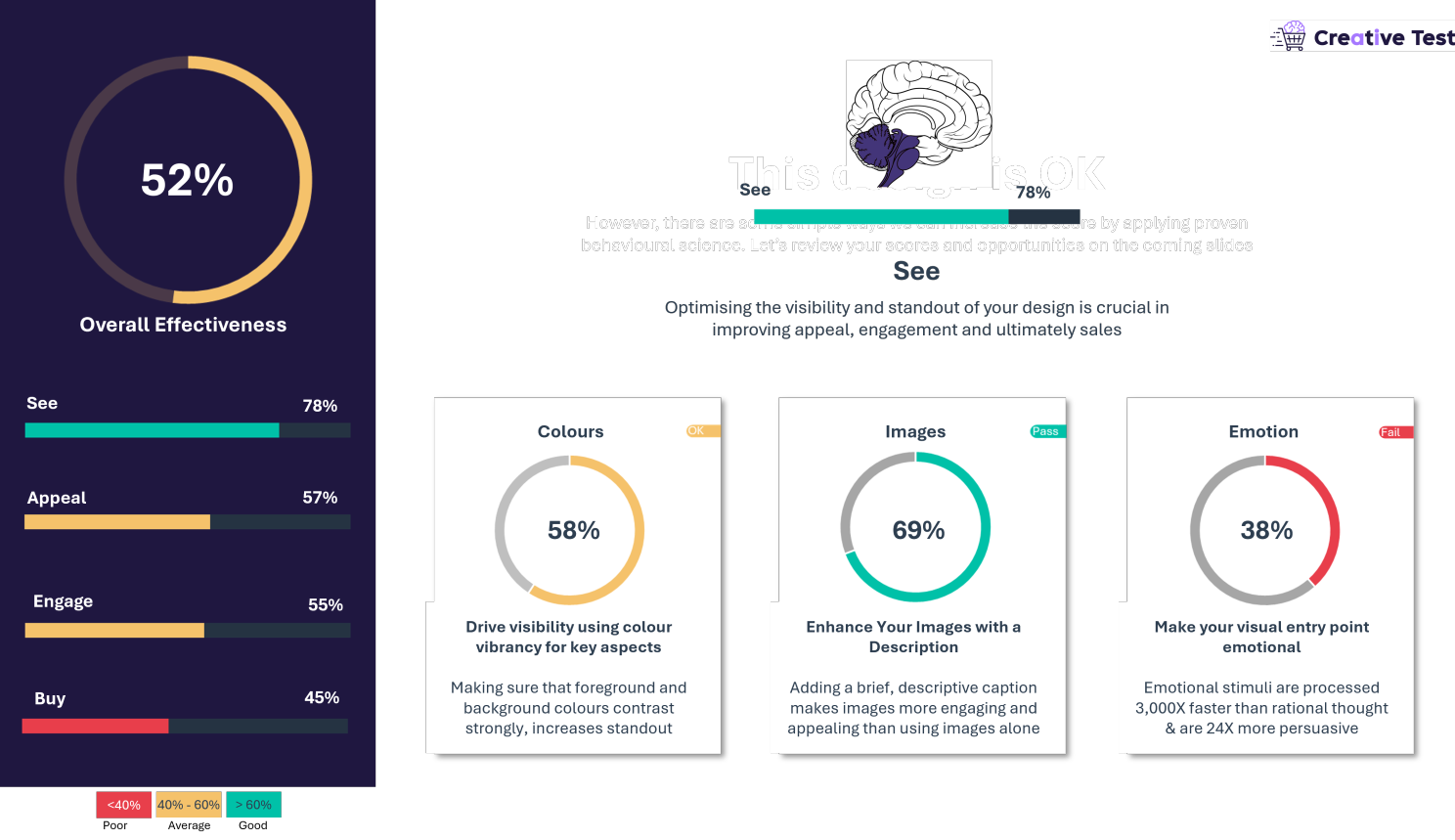
Just like predictive eye tracking, the Design Effectiveness Audit considers attention as the starting point. However, instead of merely predicting where consumers will look, it integrates findings from neuroscience, cognitive psychology, and real-world shopping data to determine the actual effectiveness of visual elements. More importantly, it explains why some elements attract attention and how to enhance their impact for better results.
2. Appeal – Measuring Emotional and Cognitive Engagement
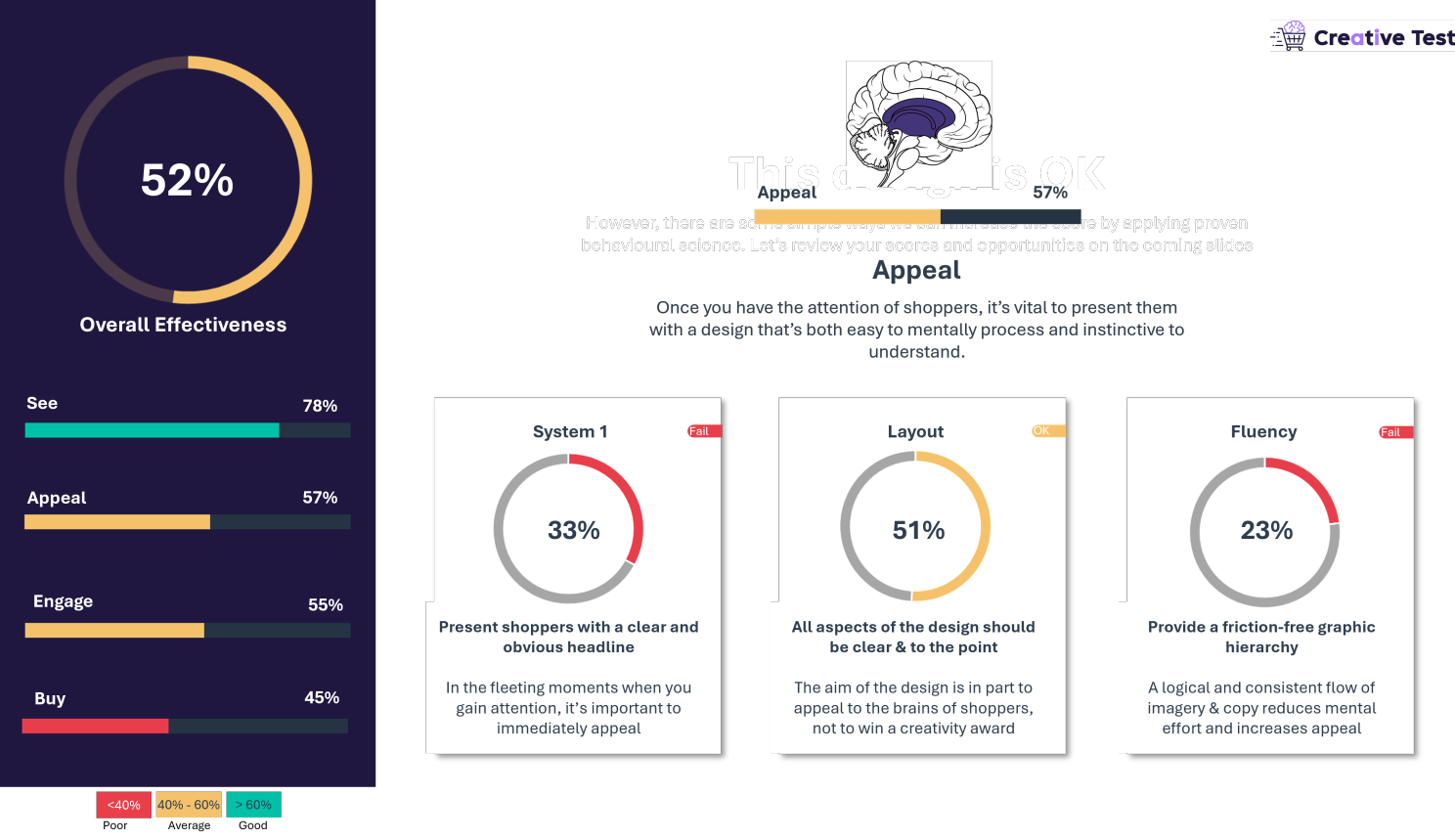
Attention alone does not drive sales. The Design Effectiveness Audit evaluates the emotional impact of design elements, including colours, typography, imagery, and messaging. By leveraging psychological principles such as priming, heuristics, and emotional valence, it ensures that a brand is not just seen but also liked and remembered. This is something that heatmaps simply cannot offer.
3. Engage – Encouraging Active Interaction
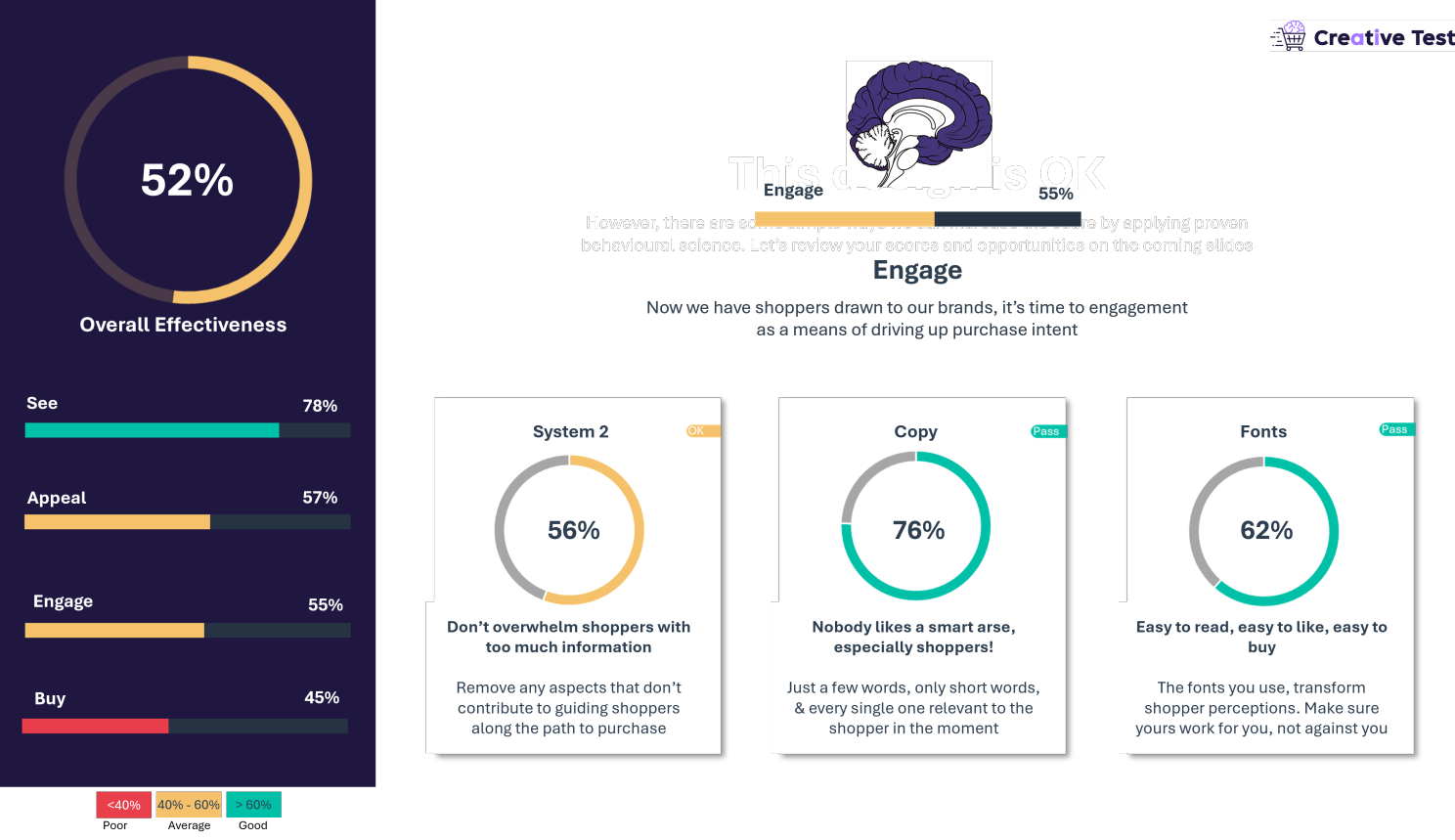
To increase conversion rates, shoppers need to interact with the brand beyond just noticing it. The Design Effectiveness Audit measures interaction prompts, such as calls-to-action, sensory engagement (e.g., touch, smell in physical retail), and cognitive load to determine whether the marketing design encourages deeper consumer involvement. Unlike heatmaps, which tell you what was looked at, this approach identifies what inspires shoppers to take action.
4. Buy – Maximising Purchase Propensity
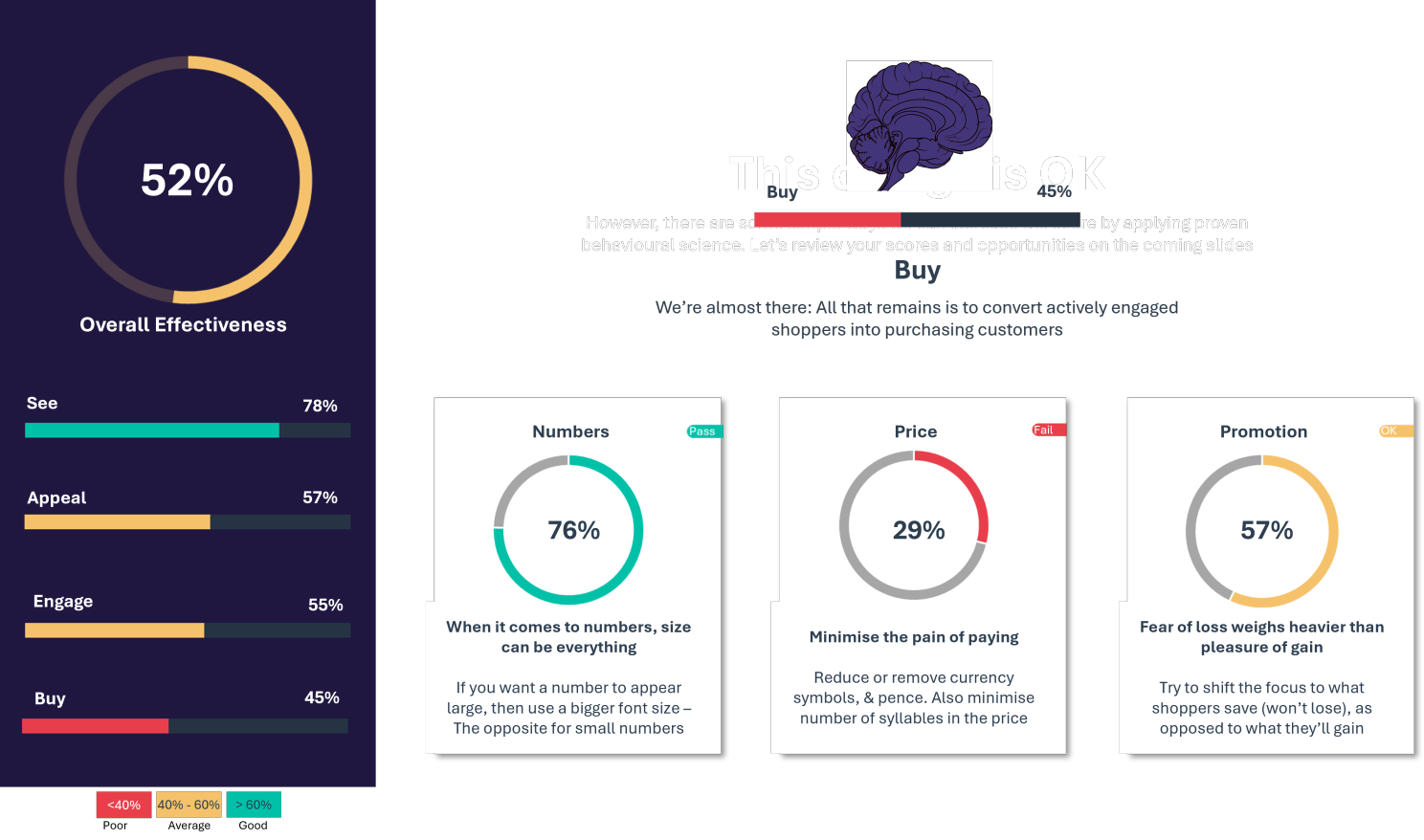
The final and most crucial step is whether the marketing intervention translates into an actual purchase. Here, the audit evaluates factors like decision friction, pricing psychology, perceived value, and urgency triggers to optimise the final nudge towards purchase. Unlike predictive eye tracking, which stops at visibility, this approach provides a direct path to improving sales outcomes.
The Business Case for Design Effectiveness Audits Over Predictive Eye Tracking
Higher Conversion Rates
Brands that rely solely on eye-tracking insights may create designs that stand out visually but fail to persuade shoppers. By incorporating psychological insights at every stage of the purchase funnel, Design Effectiveness Audits have been proven to drive higher conversion rates and sales.
Data-Driven, Not Just AI-Driven
Predictive eye-tracking tools rely purely on machine-learning models that may not capture the full complexity of human behaviour. In contrast, Design Effectiveness Audits use a combination of scientific research, real-world shopper data, and AI-driven insights, ensuring a more nuanced and accurate assessment of marketing effectiveness.
Optimisation Beyond Attention
While predictive eye tracking is limited to adjusting designs based on gaze patterns, the Design Effectiveness Audit allows for full-funnel optimisation. This means that brands can refine not just visibility but also brand perception, messaging effectiveness, and purchase drivers.
Conclusion: A Smarter Approach to Shopper Marketing
Predictive eye tracking has its place in marketing research, but it has its limitations when it comes to helping brands that want to increase sales and shopper engagement.
Attention alone does not equal action.
A successful shopper marketing strategy must go beyond visibility and take into account the full psychological journey from See to Buy.
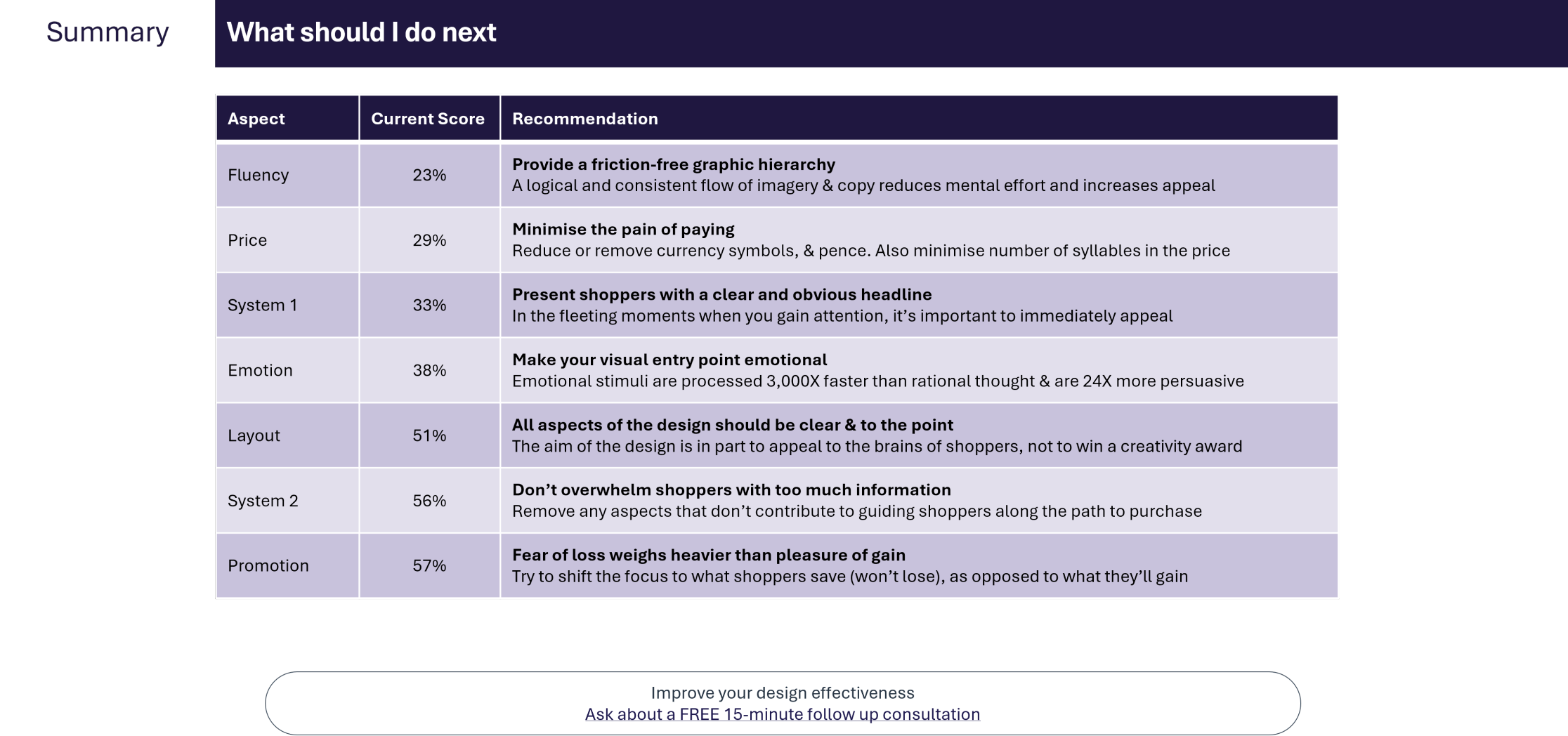
For marketers seeking a more scientifically rigorous and commercially effective approach, the Design Effectiveness Audit by Creative Test offers a superior alternative. By leveraging behavioural psychology, cognitive science, and real-world shopping data, this methodology ensures that marketing interventions are not only seen but also felt, engaged with, and ultimately acted upon.
If your goal is to increase brand appeal, shopper engagement, and sales, a Design Effectiveness Audit is the clear choice over traditional predictive eye-tracking tools. It’s time for brands to move beyond gaze prediction and start optimising the entire shopper experience.
Contact us to discuss a FREE evaluation of your design.

